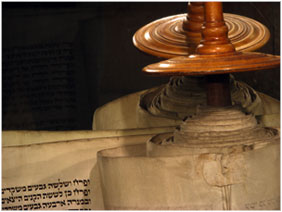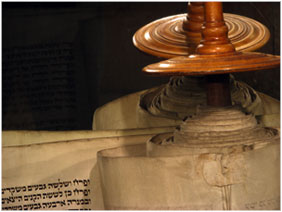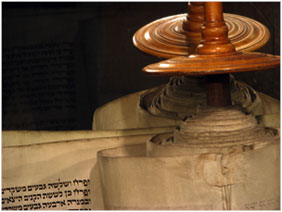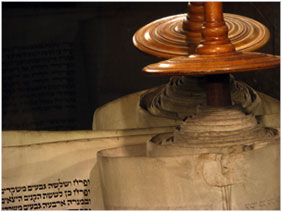-
•
•
17 responses
Spurred by Handley’s Home Waters, I’ve been reading Wallace Stegner. Like Handley, Stegner is interested in the tight twine of body, place, and genealogy that makes a life. On my account, Handley and Stegner share the same thesis: if the body is a river, then the soul is a watershed. Like a shirt pulled off over your head, this thesis leaves the soul inside-out and exposed. You thought your soul was a kernel of atomic interiority, your most secret secret – but shirt in hand, everyone can see your navel. Stegner’s novel, Angle of Repose, opens with the narrator’s own version… Read More
-
•
•
4 responses

George Handley’s Home Waters: A Year of Recompenses on the Provo River (University of Utah Press, 2010) practices theology like a doctor practices CPR: not as secondhand theory but as a chest-cracking, lung-inflating, life-saving intervention. Home Waters models what, on my account, good theology ought to do: it is experimental, it is grounded in the details of lived experience, and it takes charity – that pure love of Christ – as the only real justification for its having been written. It is not afraid to guess, it is not afraid to question, it is not afraid to cry repentance, and… Read More
-
•
•
8 responses

It’s my pleasure to announce that Adam Miller will join T&S as a guest blogger. Adam S. Miller is a professor of philosophy at Collin College in McKinney, Texas. He is the author of Badiou, Marion, and St Paul: Immanent Grace (Continuum, 2008), the director of the Mormon Theology Seminar (www.mormontheologyseminar.org), and a managing editor at Salt Press (www.saltpress.org). The Mormon Review recently featured his essay on the film Groundhog Day, which was highlighted here on T&S. Adam has planned a series of posts on George Handley’s recently-released book Home Waters: A Year of Recompenses on the Provo River. Miller… Read More
-
•
•

Zechariah 1:7-6:8: We may be able to read the first six chapters of Zechariah as having a roughly chiastic structure. As with many chiasmi, however, deciding whether this is a chiasmus is a matter of judgment rather than fact. A 1:7-17: The Lord’s omniscience B 1:18-21: Judah and the empires C 2:1-5: Jerusalem’s territory [2:6-13: Reiterates the first three parts] D 3:1-10: Joshua the high priest D’ 4:1-14: The temple itself C’ 5:1-4: Jerusalem’s self-rule (the scroll of the law?) C’ 5:5-11: Judah and Persia (? perhaps a “counter-temple”?) A’ 6:1-8: The Lord’s omnipotence If this analysis is correct, the… Read More
-
•
•

Note that the books of Ezra and Nehemiah were considered one book until well after the time of Christ. The rough chronology below will help place this week’s material in its historical context. 606 The fall of Nineveh, capital of Assyria. Babylon becomes the major power. Daniel and others are taken to Babylon from Israel 604 Nebuchadnezzar is king of Babylon 598 Judah’s king, Jehoiachin, and the prophet Ezekiel (with thousands of others) are carried captive into Babylon. Lehi leaves Jerusalem. Habakkuk and Ezekiel prophesy 587 The fall of Jerusalem; much of the population of Judah is taken captive into… Read More
-
•
•

Verses 4-5: Why does the king make this demand on his wise men? Verses 10-12: What did it mean to be a wise man in Babylon? Why was the king angry? Why do you think that the gods of Babylon are never mentioned in this story, not even negatively? Verse 24: Why does Daniel save the other wise men of Babylon? Verse 28: Why would a king living hundreds of years before Christ’s birth be interested in what would happen at the age when the end of the world would come? (“Latter days” is probably better translated “at the end… Read More
-
•
•
24 responses
A couple of posts on the social network Orkut claim that the age to serve an LDS mission in the Brazil Area has been lowered to 18—and claim that politics in the U.S. has led to the change. Read More
-
•
•
19 responses
Why is the concept of holiness so closely related to self-denial? This isn’t just a Mormon thing, or even a Christian one. We see it in the Buddhist monastic tradition, the yogis of India, and the shamans of many cultures. The holiest people are the ones who can undergo the longest tests of endurance. Most of us are more familiar with what holiness isn’t than what it is. For us, the essence of holiness is “not me”. I would guess that this is the reason we associate “holiness” with the ability to endure trials — we expect to find holiness… Read More
-
•
•
3 responses
Don’t miss the excellent Patheos panel on Mormon feminism. Kathy Soper’s thoughtful and perceptive essay headlines the event, and a fabulous group of respondents — Claudia Bushman, Tresa Edmunds, Rixa Freeze, Kristine Haglund, Caroline Kline, Neylan McBaine, Melissa Proctor, and Rosalynde Welch — pitches in with a wealth of excellent follow-up analysis. If you’re at all interested in Mormon feminism, make sure to check out the discussion. Read More
-
•
•
26 responses
After a flurry of posts related to the new edition of the CHI (now titled Handbook 1 and Handbook 2), the Bloggernacle has fallen silent. (The Salt Lake Tribune has followed up with a helpful article.) One of the new features of Handbook 2 (“H2”) highlighted in the worldwide training broadcast is the three introductory chapters that provide a foundational and doctrinal context for the guidance given in the balance of the book. I am going to note a few statements given in the four pages of Chapter 1, “Families and the Church in God’s Plan,” with short comments following… Read More
-
•
•
4 responses

A few years ago, I walked half the circuit of a massive town wall. After hauling three kids and pushing a fourth in a stroller for a few hours through the forest, we recognized the wall by the close-packed rubble that stuck out from the crest of the long dirt mound. Read More
-
•
•
34 responses
So, Jesus has returned. He’s living in your single adult ward and there’s a dance this Friday night. Tell me, girls and guys, do you attend the dance? If so, how does it make a difference that He’s there? Would you try to hang out with Him? How do you expect He would look/act? How would you look/act? On the other hand, if you’d give it a miss, why? Read More
-
•
•
21 responses
So…stay-at-home moms. Utah’s got lots of them. And I bet you’re a market demographic excitedly waiting to hear what I (an admittedly non-stay-at-home dad) am about to propose to bring joy, peace, time, and every other wonderful thing to your day. Well, wait no more, the first of the Great Mormon Business Ideas is here for you today! So far as I can tell, the three banes of the SAHM are: (1) laundry, (2) cleaning, and (3) taking care of kids. But none of these are really so bad on its own; it’s the fact that all three simultaneously demand… Read More
-
•
•

Let me begin, once again, with a reminder that these are not intended for notes to help teachers, though they may also serve that purpose. I write them for people who want to study the lesson materials more thoroughly. So you’ll find explanatory notes and study questions (fewer for this lesson than for most), but few answers. There is considerable material in the readings for this lesson, so I am going to focus the study questions on the book of Esther (the entire book rather than only the parts assigned for Sunday School). I want to focus on Esther because… Read More
-
•
•
20 responses
Here is a second post (see No. 1) drawn from Stephen Prothero’s God Is Not One (HarperOne, 2010). In Chapter 7, titled Judaism: The Way of Exile and Return, Prothero comments on how ritual and ethics receive greater emphasis in Judaism and doctrine receives less emphasis than in, for example, Christianity. I wonder to what extent this is also true of Mormonism. Noting how narrative Exodus is followed immediately by the detailed legal and ethical recitations in Leviticus, Prothero notes that Judaism is “about both story and law,” and that Judaism stresses “doing over believing, orthopraxy over orthodoxy.” The word… Read More
-
•
•
59 responses
I started this semester as a seminary teacher. Two months in, I realized that it wasn’t going to work. I was tired and miserable, useless to my family, and unproductive at work. So, for the first time in my life, I asked to be released from a calling. No, that’s not quite accurate. I didn’t really ask; I informed them that I could manage for about two more weeks and then I’d be done. Now it’s been a week since I stopped teaching, and I have no doubt it was the right choice. The entire experience of teaching seminary was… Read More
-
•
•

Ezekiel’s book goes back and forth between telling of the literal return from Babylon to Jerusalem in ways that we can also read to refer to the last days to speaking directly of the last days. (But when he thinks of the last days, is he thinking of the same event or events that we are thinking of?) Beginning in chapter 40, he has a vision of the temple in Jerusalem and of the order of temple worship there. What kind of vision do you think this is? In Ezekiel 37:26-28, the Lord promised the temple as part of the… Read More
-
•
•
23 responses
What if you could play the lottery and not lose any money? — You might not win, but you were guaranteed not to lose what you put in. Would that still be against LDS Church teachings? Would you vote against it in a referendum? Read More
-
•
•

Chronologically we turn backwards at this point. Jeremiah was the prophet in 597 B.C. when Jerusalem was finally captured and destroyed by Nebuchadnezzar and its people were carried into Babylon. Like Lehi, Ezekiel was a contemporary of Jeremiah, but Ezekiel did not prophesy with them. Instead, like Daniel, Ezekiel was with the large group from Judah taken captive into Babylon earlier. He began to prophesy only after arriving in Babylon, so prophets in Jerualem, like Lehi and Jeremiah, may not even have known about Ezekiel. Tradition has it that he died and was buried in Babylon. With that in mind,… Read More
-
•
•
58 responses
Things happen fast around here these days. Last night when I retired for the evening, nothing about yesterday’s Worldwide Leadership Training Meeting had yet been posted online. Now that I am home from church today and are sitting here at my computer, the video is publicly posted for all to read and discuss; Handbook 2 (or “H2”) is likewise publicly posted; and several Bloggernacle posts are up (here, here, here, here, here, and here). But I still think my notes have a few things to add to the discussion. In his short pre-recorded introductory remarks, President Monson stated that reading,… Read More
-
•
•
107 responses
Well, this will keep bloggers busy for a good long time. Read More
-
•
•
7 responses
A new issue of The Mormon Review is available, with Adam Miller’s review of Groundhog Day, directed by Harold Ramis. The article is available at: Adam Miller, “Groundhog Day,” The Mormon Review, vol.2 no. 5 [HTML] [PDF] For more information about MR, please take a look at the prospectus by our editor-in-chief Richard Bushman (“Out of the Best Books: Introducing The Mormon Review,” The Mormon Review, vol.1 no.1 [HTML][PDF]). In addition to our website, you can have The Mormon Review delivered to your inbox. Finally, please consider submitting an article to MR. Read More
-
•
•
26 responses
I’ve been reading Stephen Prothero’s new book, God Is Not One: The Eight Rival Religions That Run the World — and Why Their Differences Matter (HarperOne, 2010). I’m rather enjoying it, which is a bit of a surprise given that I’m not generally a religions of the world kind of guy. Anyway, Prothero devoted a generous two pages in his 34-page chapter on Christianity to Mormonism and said some refreshingly pleasant things about us. Read More
-
•
•
33 responses
Today is Armistice Day. You were supposed to bow your head in a minute of silence at 11:11 today, the 11th day of the 11th month of the year, in recognition that peace was achieved at that time in 1919, ending what we now call the First World War. Did you do it?” Read More
-
•
•
128 responses
This is interesting stuff. Read More
-
•
•
25 responses

I once almost joined the ward choir. What’s surprising about this is that I don’t actually sing. Read More
-
•
•

As you read Jeremiah, you should do what the lesson materials for Isaiah suggested: ask how those to whom Jeremiah was speaking would have understood his prophecies, how those in the Book of Mormon (who had a record of part of his prophecies with them) would have understood them, how the members of the Church in New Testament times would have understood them, how we can understand them today, and how they may teach us of things yet to come. Read More
-
•
•
39 responses

I recently watched The Crucible, a movie about the Salem witch trials. The core issue of the story is, how do you track down the criminal in an untraceable crime? The people of Salem believed that witchcraft could be performed by anyone, anywhere, with no outwardly visible evidence. Convinced of the reality of witchcraft, and unwilling to accept that nothing could be done about it, the Salemites’ solution to the issue was to allow “spectral evidence” — testimony based on dreams. A person who had dreams of his or her neighbor as a witch could prosecute the neighbor solely on… Read More
-
•
•
92 responses
Go here and either listen to or read (I love transcripts! Thank you!) this episode and then return and report. Read More
